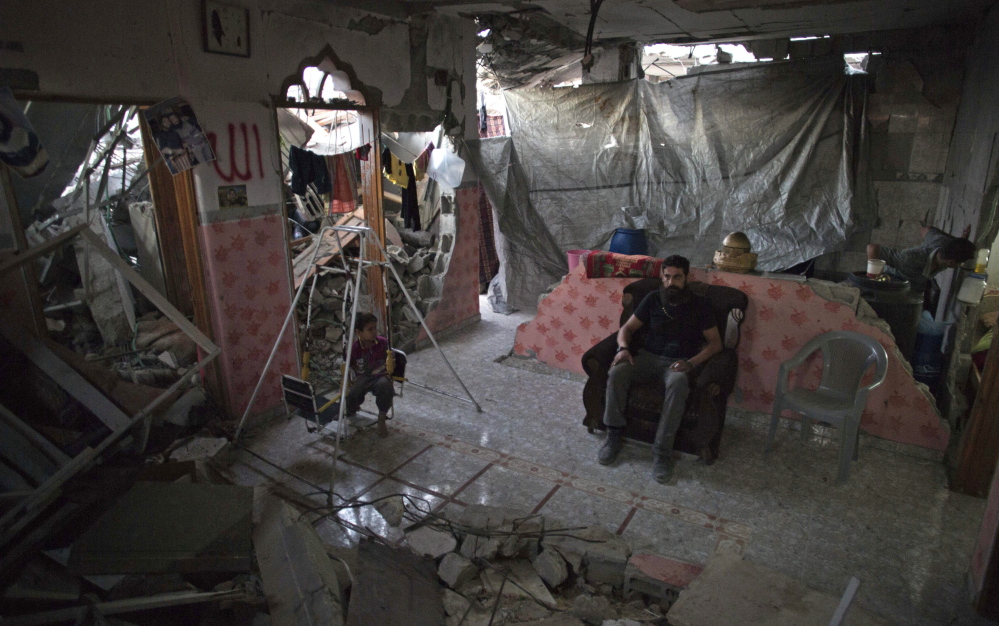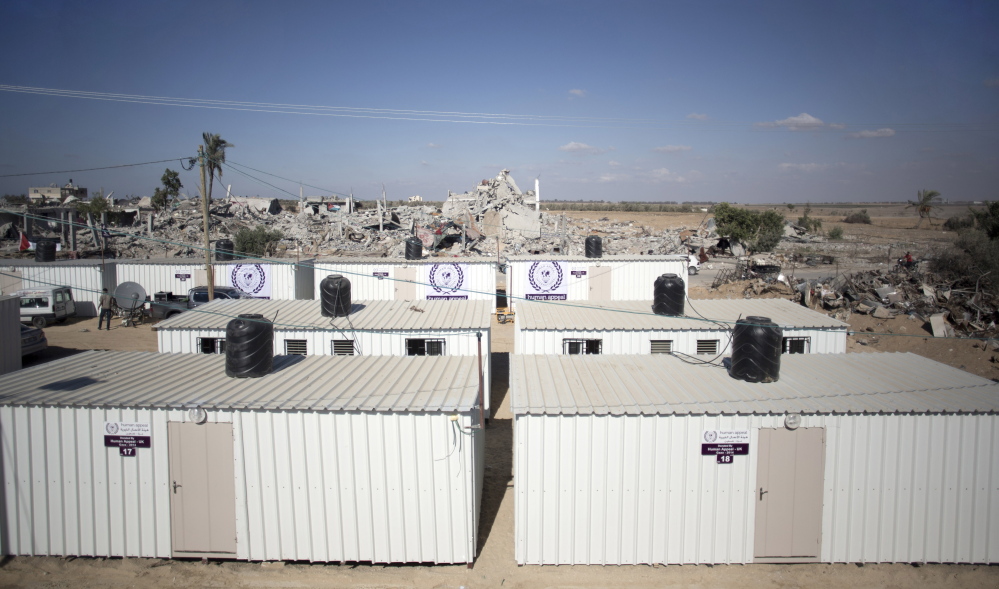KHUZAA, Gaza Strip — More than five weeks after the Israel-Hamas war in the Gaza Strip, tens of thousands of people whose homes were destroyed or badly damaged still live in classrooms, storefronts and other crowded shelters. In some of the hardest-hit areas, the displaced have pitched tents next to the debris that once was their homes.
Yet despite their pressing needs, reconstruction efforts appear stymied by a continued Israeli-Egyptian border blockade of Gaza and an unresolved power struggle between the Islamic militant group Hamas and Western-backed Palestinian President Mahmoud Abbas.
Those involved in rebuilding say the postwar paralysis finally will come to an end next week, with an international pledging conference in Cairo. There, Abbas is to ask for $4 billion for Gaza, including for the rebuilding or repair of more than 60,000 homes and 5,000 businesses.
Once the money is raised, a United Nations deal is to ensure that large amounts of building materials get into Gaza, despite the blockade. Under the arrangement, Israel would gradually ease restrictions, while Abbas – who lost Gaza to Hamas in 2007 – is to regain some control there and make sure cement and steel meant for reconstruction aren’t diverted.
But James Rawley, a senior U.N. official involved in the reconstruction, acknowledged the deal is fragile.
“We have a window of opportunity to make a difference in the lives of the people of Gaza,” Rawley said. “But for that to happen, we need all parties to cooperate and work hard, including increasing the capacity of the (Israel-Gaza) crossings.”
Skepticism about rebuilding efforts is widespread in Gaza. The recent 50-day war was the third in the territory in just over five years. Many homes destroyed in previous fighting still haven’t been rebuilt.
During the most recent fighting, Israel launched thousands of airstrikes at what it called Hamas-linked targets and unleashed artillery barrages on border communities it said had been turned into militant outposts. Hamas fired thousands of rockets and mortars at Israel during the war. More than 2,100 Palestinians were killed, the majority of them civilians, according to the U.N. Israel lost 66 soldiers and six civilians.
In al-Khuzaa, a farming town on the border, local officials said more than a third of some 2,800 houses and apartments were destroyed or damaged. Last week, an international charity set up several dozen metal prefab homes in one neighborhood at a cost of $6,000 each, apparently the first such relief effort in Gaza.
Hamdan al-Najjar, 55, whose family of eight had slept for weeks in a shack of wooden boards and plastic sheets in the razed neighborhood, received one of the small trailers. But he hopes the temporary won’t become permanent.
“We don’t want to stay in the trailers for a long time and hope they will rebuild our houses,” al-Najjar said.
The prospects for homes actually being rebuilt appear mixed.
In a climate of distrust, the U.N.-brokered arrangement requires unprecedented cooperation, not just between Israelis and Palestinians, but between Abbas and Hamas. At the same time, though, the war has created a rare convergence of interests.
Israel wants long-term quiet on its border with Gaza, and its army chief recently said he believes allowing the import of building materials and restoring livelihoods wiped out by border closures will reduce the risk of another war.
Abbas also has a chance to end more than seven years of absolute Hamas rule in Gaza by overseeing reconstruction. Hamas militants actually may allow Abbas’ forces to be present on the ground, realizing that the international community otherwise will not assist.
Send questions/comments to the editors.




Success. Please wait for the page to reload. If the page does not reload within 5 seconds, please refresh the page.
Enter your email and password to access comments.
Hi, to comment on stories you must . This profile is in addition to your subscription and website login.
Already have a commenting profile? .
Invalid username/password.
Please check your email to confirm and complete your registration.
Only subscribers are eligible to post comments. Please subscribe or login first for digital access. Here’s why.
Use the form below to reset your password. When you've submitted your account email, we will send an email with a reset code.